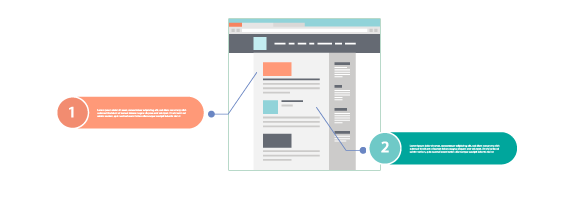ECommerce has recently drastically become part of our life and it’s easy to acknowledge it as a growing trend since, in Greece, the number of people between the ages of 16 and 74 that have bought something online at least once has increased from 27% in 2012 to 40% in 2018.
According to GRECA, the Greek eCommerce Association, 85% of internet users regularly shop online while a major part of their purchase -which reaches up to 80%- is made in local online stores.
But is there a way to ensure that your eCommerce will stand out and be featured among the top 10 organic search results to be discovered by that 85% of internet users? Once again, SEO can help you “climb your way” in the search results and increase your sales, starting from the following simple tips.
Choose the appropriate keywords

Just like any SEO campaign, an e-shop’s SEO begins with finding suitable keywords. The first step is to do the corresponding research beforehand, not only on keywords but also on competitors.
For example, if you work in selling men’s clothing and you compete against bigger stores, you won’t be able to overtake them with the keyword “men’s clothing”. You must focus on the ranking of particular products and web pages with less competitive and more specific terms.
Prioritizing keywords that are as accurate as possible in your products and have a high Exact Match Search Volume (locally and not internationally) in the Google AdWords Keyword tool. Make sure that the chosen keywords are different for each one of your shop’s pages and use Google Analytics to pick out the most interesting ones in order to determine keywords for them (firstly keywords, as well as long-tail variations made of 3 words or more, that will further describe the general keyword, e.g. white women’s shoes with laces instead of women’s shoes).
Consider the structure of your eCommerce

Choosing the right structure for your online store could have a great impact on ranking, conversations and the overall consumer’s use and preference while an appropriate design will benefit your product growth in the future.
Always keep usability in mind and focus on creating a “flat” structure for your eCommerce so that the products are easily accessible from the home page in a few clicks through internal links. Build the structure around the chosen keywords to provide your customers and the search engines with a consistent pathway from the home page to the product pages.
Typically, the structure should be the following: home page that leads to different product categories where each one should be divided into subcategories that lead to the products themselves. For instance, an online pet shop’s structure should be: home page, categories: dog food, cat food, fish food, subcategories: canned food/dry food, etc., before taking the user to the products of the corresponding subcategory.
Don’t forget internal linking, i.e. inserting links in your pages leading to other pages of your online store so that you can guide your customer internally. However, use them wisely and of course make sure that they are user-friendly: requiring very few steps to check-out, fast loading speed, direct contact with the customer through live chat. Also, don’t neglect the mobile version of your store as 31% of online users usually browse and buy on their phones.
Add content to your blog

By defining a keyword for each page of your eCommerce, naturally, a few words will be left out unused. That’s when your blog comes in to help you include the keywords you need.
A blog can allow you to upcycle keywords that didn’t make it to the main pages of the online store by using them to enhance your posts. However, consider uploading high quality content to your e-shop’s blog and make it friendly to the reader. It should come from a professional who knows the subject and has basic knowledge in SEO.
For example, if your eCommerce sells drugstore products, you can write a post to help your customers choose the right cream or let them know about which vitamins they need for this summer, etc. This will allow you to use the appropriate keywords. You could even combine posts to create a downloadable guide that will require filling in a form and giving an email address that you can later use to send marketing newsletters (provided that you have obtained your customer’s consent).
Don’t forget social media

No eCommerce is complete without its social media and that’s because of the signals that you put out there, such as shares, likes, comments, etc. which allow you to build a community, include your customers and share your content. Those factors play an important role in SEO.
A large number of social signals shows to Google that people find your online store useful. You can increase them by adding more social media buttons on your product pages, blog posts and, of course, your home page. This way, you can use your social presence to build word-of-mouth and get more customers, recommendations and links.
Carefully write your product descriptions

Clever, catchy product descriptions on your online store have a huge impact on the conversation rate and represent an undeniably important factor. That’s the reason you should avoid using the manufacturer’s description. Instead, try writing your own, unique descriptions using keywords to make them more “Google-friendly”.
Meanwhile, consider the quality of the pictures that appear next to them. They also have a value in SEO as it is possible to attract users to your online store thanks to Google Images results. So, take the time to fill in the ALT tag with a description that contains valuable and accurate keywords.






Join the Discussion